Chapter 1Origins
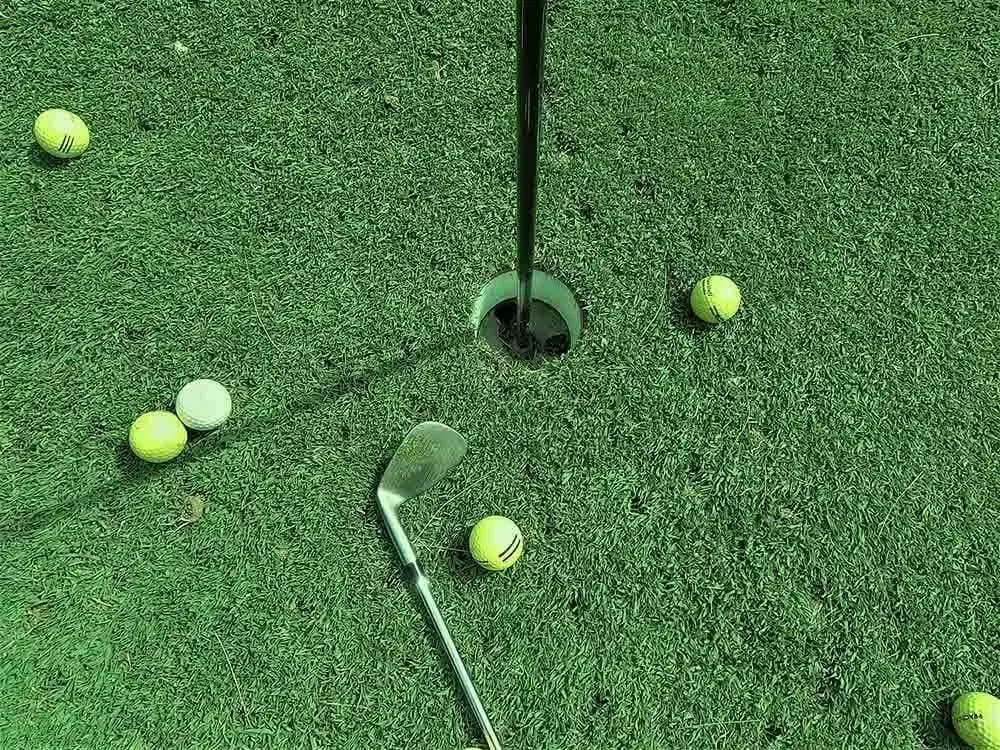
Chapter 2Associations
Chapter 3Rules of Golf
Chapter 1
Origins
The origin of golf is very challenging to decipher when looking at each region history. The description of the golf game makes it difficult to determine the exact history of golf.
Many describe the golf game as a ball-and-stick type sport. This type of sports dates back to the 2600 B.C. era. Listed below are some of the mentions of the ball-and-stick games.
2600 BC Egypt: A ball-and-stick type sport was mention in 2600 BC in Middle Egypt. There are images of players on the tomb of Kehti Beni Hasan. The Greeks, most likely adopted game from the Egyptians.
100 BC: The Romans developed an early form of golf called Paganica. The game consisted of a stuffed leather ball and a bent wooden stick. The balls were larger, and they range in size from five to five and a half inches in diameter. The object of the game was to hit a target, which could be either tree, a rock or something else. Two teams played in the opposite direction, similar to hockey.

960-1279: Chuíw án is a similar game to golf. The Chinese played the game at several clubs during the Song Dynasty.
1261: Jacob van Mae Maerlant, a Flemish poet, mention the game of kolf (golf) in the dutch manuscript in 1261. This was the earliest mention of the game in the Dutch language. Kolf was very popular in Belgium, Netherlands and Luxembourg.
1297: The Dutch played the game with a stick and leather ball in Loenen. The object of the game is to put the ball in a hole using golf clubs. The winner is the person with fewer strokes to the spot a few hundred yards in the distance.
1360: Brussels council banned the game of golf/colf. If anyone played, there would be a fine or the confiscation of an overcoat.
The Modern game (the big debate, Scottish or not?)
Scotland is known as the home of golf, and it is seen worldwide as the national cultural icon of Scotland. The modern-day game of hitting a small ball with a stick around a course of 18 holes is a Scotland origin.
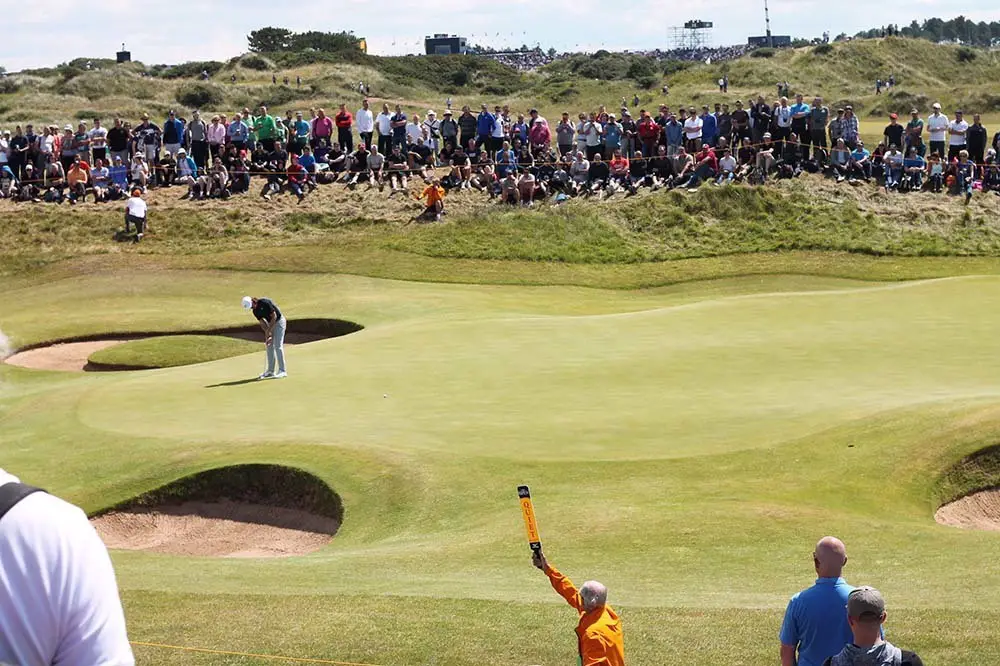
However, there are reports the game originated elsewhere. They believed there was a golf-like game played in continental Europe. Many scholars argue that the game originated in 17th-century Netherlands and that this time frame predates the game in Scotland.
Scholars argue the word golf was thought to be an alternate word for ‘colf,’ which is a Dutch term meaning stick or club. The Dutch version of the game related to a game where the lowest number of strokes need to hit a ball with a mallet into a hole determines the winner.
Early golf in Scotland
Most modern sports have origins in earlier games that goes back thousands of years. Golf is no different. Like most recent games, golf developed into a recognizable version.
Golf differs from other sports in that the origins lie in the stick-and-ball games of ancient times. The modern game dates back as far as the 1400s in Scotland.
The 1457 Act, which prohibited golf, of the Scottish Parliament documented golf in Scotland. King James II prohibited golf because he believed the popularity of the sport was a distraction from military training.
In the 1500s, however, King James IV became captivated with the sport. When there was a short term of peace, King James IV engaged in the sports and allowed others to do so.
There is proof that expatriates, immigrant and Scottish soldiers took the sport to the British colonies during the 18th and 19th centuries.
Chapter 2
Associations Develop
By the end of the 1800s, golf popularity increased in the U.S. Golf popularity led to a need for an organizing body. In1894, delegates from the area golf clubs met to form a golf organization. The delegates represented Yonkers New York, Southampton New York, Brookline Massachusetts Chicago and Newport Rhode Island.

In 1894, the United States Golf Association (USGA), which is a governing body, was created in New York. The governing body is for the U.S. and Mexico national association of clubs, facilities and golf courses. It establishes rules for the game and administers the golf championship.
There are five charter member the USGA, and they are:
-St. Andrew Golf Club of Yonkers, New York-Newport (Rhode Island) Golf Club-Shinnecock Hills Golf Club in Southampton, New York-The Country Club in Brookline, Massachusetts-Chicago Golf Club in Wheaton, Illinois.
USGA serves as a referee for rules, questions and general information on amateur status. In 1916, the USGA changed the name to Professional Golf Association of America (PGA).
Both professionals and amateurs are now allowed to play in the British Open, and the U.S. Open. However, they are not allowed to play in the Accenture Match Play Championship, the Arnold Palmer Invitational and the Golf Championships.
The Ruling Authority (R&A), which is the ruling authority of golf throughout the world except for U.S. and Mexico and the USGA interprets and makes the rules of golf. The USGA does the following:
-Provides national handicap-Conducts 14 national championships-Test golf equipment for adherence to regulations
Britain
In ancient times, golf originated as the stick and ball game of the sport that’s played today. Golf dates back to the 1400s in Britain.
When James VI of Scotland took the throne in England in 1603, he and his court played golf at the Blackheath course in London.
Mary, the Queen of Scots and the ruling class, contributed to the rise of the sports.
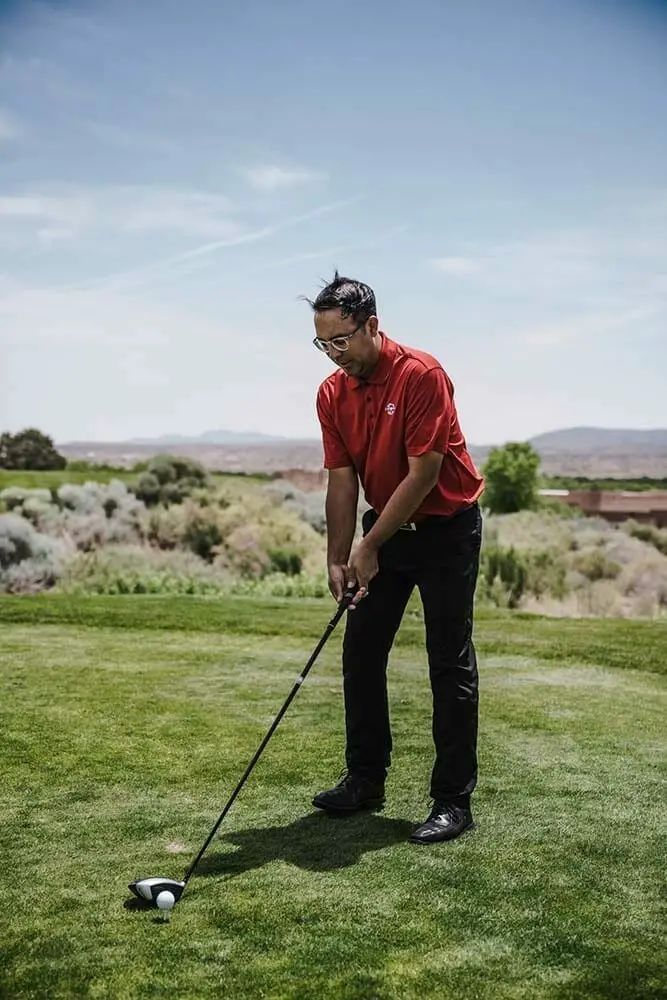
Queen Mary played golf often, and her students carried her clubs, whom she called cadet. Many believe that the word cadet is the origin of the word caddie.
In the 1600s, James I lifted the ban on playing golf on Sunday. He also appointed the official golf clubs and golf ball makers.
James II arranged the first international match between Scotland and England. The game of golf slowly became popular outside of Scotland. However, there were several notable courses outside of Scotland.
In the early 1770s, British slave traders built the first African golf course on Bunce Island in Sierra Leone. Below are notables reminders of the oldest golf clubs and golf excursion outside of the British Isles.
-In 1844 the Mauritius Gymkhana Club was built
-1829, the Royal Calcutta Golf Club
-1856 the Pau (the oldest golf course in continental Europe_.
Golf became widely popular in the 19th century outside of Scotland.
The United States and Canada
A vast majority of the nineteenth centuries golf had a difficult time gaining popularity in the U.S. The nation at the time was busy building rebuilding itself after the Civil War. When America found time for sports, it was horseracing, baseball and boxing.
However, there is evidence of golf in America during the 17th century. For example, in 1650, a group of men played golf for points near Fort Orange (Albany New York). And, in 1657, a group of men were cited and warned not to play golf, and in 1659, an ordinance was issued to prevent golf in Albany New York, because of broken windows.
In the 1800s golf thrive in the United Kingdom. However, it slowly began to spread outside the shores of Britain. The U.S. was slowly catching on to golf craze.

In 1873, Canada Royal Montreal Club was the first golf club in North America. The club members played on Dixie (formerly known as Fletcher Field). The name Dixie derived from Southern refugees of the U.S. Civil War. Golf was also played in 1876 at the Niagara and Toronto, Ontario clubs, and in 1879 in the Brantford, Ontario club.
Golf arrived at the tail end of the 18th century mostly in the northeastern part of the United States. The U.S. built the first golf club 15 years after the Canada Royal Montreal Club. In 1888, John Reid, a transplanted Scot, ordered a set of clubs from Tom Morris in St Andrews.
He gathered together a small group of his friends and set out to a three-hole course in the cow pastures of Yonkers, New York. After playing with his friends, the group formed the St. Andrew Club of Yonkers, which is the first golf club in America.
In 1889, a group of Englishmen built the Middlesbrough Golf Club. In 1894, there were a total of nine golf courses in the U.S. Chicago had the first golf course on the coast and the U.S. first 18-hole golf course. Chicago became a popular location for golf because of its 26 golf courses.
Chapter 3
Rules of Golf
In 1744, a small group of gentlemen golfers came together and formed a group called the honourable company of Edinburgh golfers. They are believed to be the oldest golf clubs in the world. In 1754, when the Society of St Andrews came up with the Saint Andrew code, the Honourable company drew up their own set of rules for golf. They framed 13 rules.
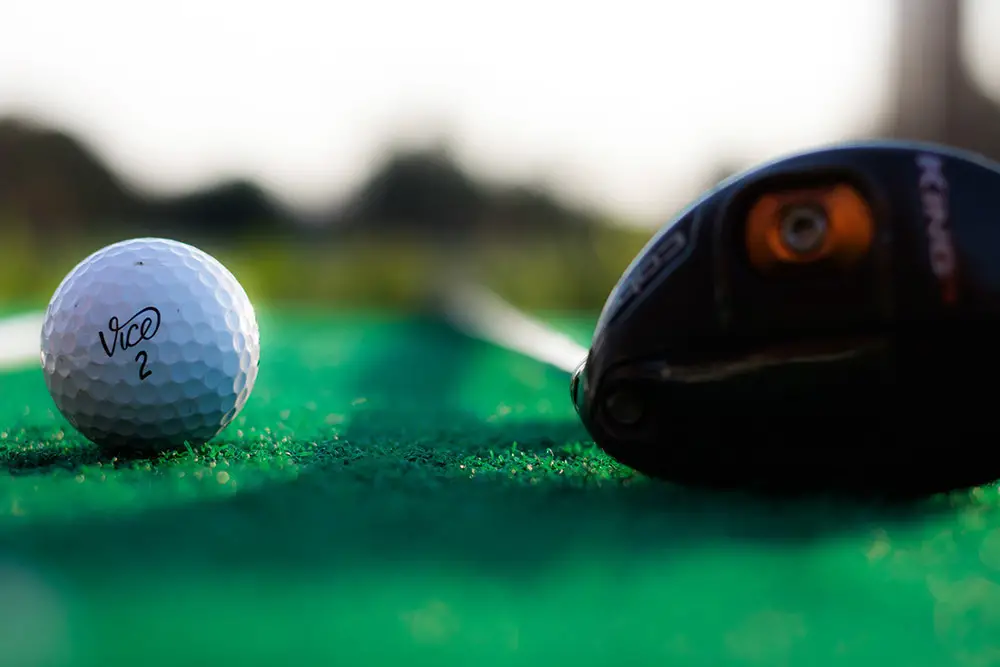
The first rule state that your ball must be teed within a club-length of the hole and your tee must be on the ground. The ball that is struck must not be changed, and the ball must be removed from water or water hazard. If you remove it, you must per permit rival a stroke.
Representatives from the British Unions Advisory Committee, the United States, Commonwealth and the European Golf Federation have co-opted to consolidate the codes. At various times the U.S. and Britain have decided to have separate codes. However, in 1967, a uniform code took effect.
The R&A and the USGA are golf rule-making bodies. Their goals were to provide uniformity in the rules of golf by analyzing views, recommendation and interpretation for revisions.
The golfers in St. Andrews established the R&A and embraced the rules of the Leith. Periodical changes were made before R&A was framed to turn the last position in 1897.
Equipment Develops
The allowance of a variety of iron heads is the most notable factor in golf. The introduction of the steel shaft began in the late 1890s, but the governing bodies of golf were slow to adopt them.
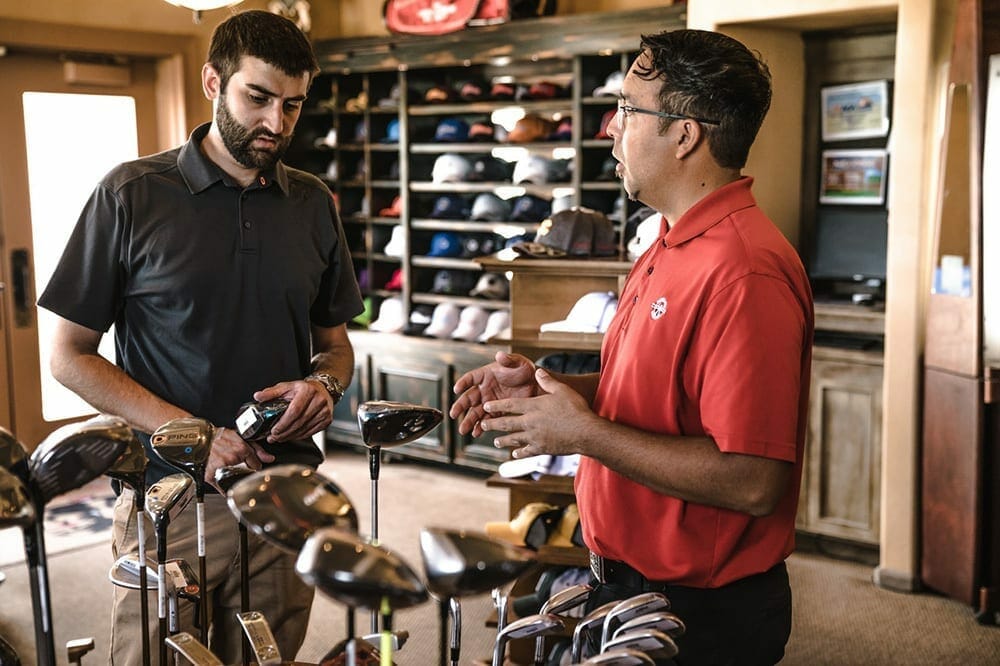
In the 1970s, there was a shift in shaft technology for strength characteristics and lightweight. Graphite shaft filled the role with both traits.In the 1980s, metal with its strength and versatility replaced wood.
New golf clubs employ graphite and lightweight titanium heads to increase the size of the clubhead. Modern material strength increases the distance the ball can travel by increasing the spring-like effect of the club. The new materials also allow a much thinner face of the club.
To maintain the challenge of the game, the USGA limited the spring-like effect to .83 and the maximum clubhead size to 460 ccs. The spring-like effect is known as the Coefficient of Restitution.
Golf Balls
For regulation golf balls, the maximum weight of 1.62 ounces and a minimum diameter of 1.6 ounces. The competition velocity of the ball should not exceed 250 ft. However, Britain does require a velocity specification.
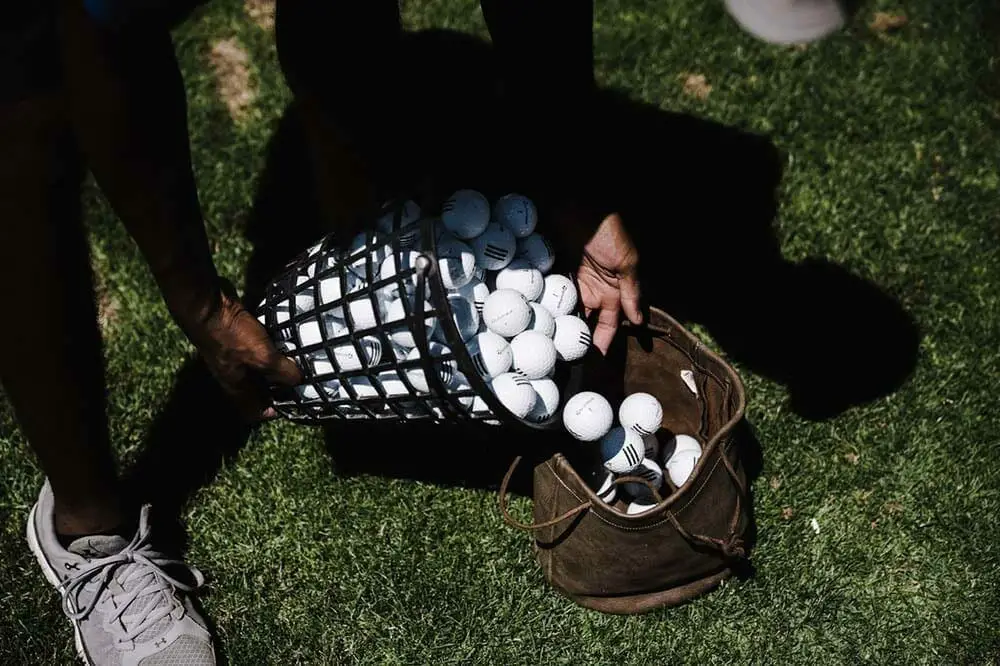
The early golf ball
The golf balls made between 14th and 17th centuries composed of hard wood, such as Beach and box trees. In Scotland, however, the balls were filled with cows hair imported from the Netherland.
Feather Era
Later, the feathery ball came to light with a unique process. The feathery cover is a hand-sewn round leather pouch stuff with goose or chicken feathers and coated with white paint. The volume of the feathers should be a top hat full of feathers. The feathers were softened, boiled and stuffed into the leather pouch.
Gutta-percha (gutty)
In 1848, the emergence of the Gutta-percha revolutionized the game.
Dr. Robert Adams Patterson invented Gutta-percha (gutty) ball. Gutta-percha, a milky-like dried sap of the Malaysian sapodilla tree, has a softness and rubber-like feel of the sap. The sap can be heated and shaped in a mold. The sap becomes impressible and soft at boiling temperature. When it cools, it becomes brittle and retains its shape. Cold water does not affect the sap.
In the 1840s, it came to light that the properties of the gutta-percha were ideal for the manufacture of golf balls. The simple process of boiling the sap, molding it and allowing it to dry was efficient in manufacturing of golf balls.
Not only was the sap quickly to manufacture, but it was also cheaper to produce. During the manufacturing process, if a ball was damaged or not perfectly rounded, it could be quickly reformed.
By accident, the damage balls with nick and cuts actually provided a more consistent ball flight than the ball with a perfectly smooth surface.
The manufacturer started intentionally making the indentations on the surface of the new balls using a hammer, or a knife or chisel gave the guddy textured surface. The new protruding knobs left by carvings patterns across the ball surface became known as brambles due to the resemble of the Bramble fruit.
Rubber Ball
In 1903, the Spalding company launched a new ball, which covered with bladder, a natural rubber. The bladder ball is easier to control than the gutta-percha and more durable. The balls with indentations produced better results than the balls with bumps. They also reduced the drag on the ball by increasing turbulence.
In 1899, George F Grant, one of the first African-American golfers, increase the playability and popularity of golf by introducing the golf tee.
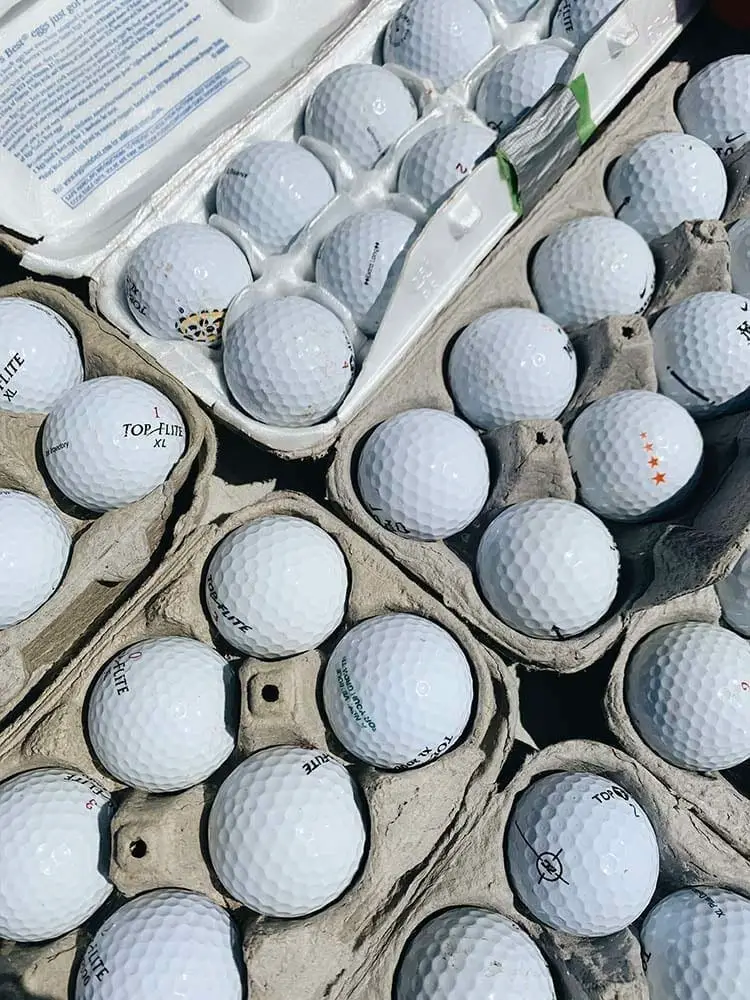
Grant’s invention also increased the average player’s opportunity of getting the ball airborne. Players previously made a tee from a pinch of wet dirt or used early tees made from rubber, steel or cardboard.
The 1.62 formula
The R&A enacted the 1.62 formula after World War I. The formula meant that the ball must be a maximum weight of 1.62 ounces (45.93 grams) and a minimum diameter of 1.62 inches (4.11 cm).
A ball 1.68 inches in diameter and weighing 1.55 ounces was tried by the USGA for two years. But, in 1932, it reverted to a weight of 1.62 ounces and a diameter of 1.68 inches.
Early clubs
The early specimen of golf club came to spotlight in 1970 during the excavation of the Dutch East Indiaman Kennemerland when it sunk in 1664. Previously the oldest clubs were discovered in Hull, England, with a newspaper with a date of 1741.
There are early specimens in the British Golf Museum at St. Andrews.
The clubs include two woods and a putting cleek, which is a putter with an iron head on a wooden shaft. The putter was made in the second half of the 18 century by Simon Cossar of Leith, who was a club maker for the Company of Gentlemen Golfers.
Allan Robertson, a member of R&A, made cleek for steady putting. After he realized that the gutta-percha ball did not ruin golf, he also realized the value of iron with approach shots.
“Young Tom” the son Tom Morris created an idea for the cup-faced niblick, which is the nine iron today for playing the shorter distance and approaches.
Golf Courses
A round of golf consists of 18 holes, which is available on most golf courses. However, some golf courses have nine holes. In a stipulated round, the golfer plays them twice. Golf courses usually measure from 6000 to 7000 yards and individual holes range from 150 to 600 yards.

The golf game requires play of the ball from tee to hole by continuous strokes according to the rules. The design of the golf accommodates for the different positions of the ball. The objective of the game is to make the fewest strokes.
During the early 19th century, there was no requirement for the number of holes. The number of holes required varied with the localities.
When Leith, with five holes, popularity drop. St. Andrews became a popular hub. In 1764, St. Andrews round was modified to 18 holes.
Golf clubs
In the average player golf set, there are either 9 or 10 iron and 3 or 4 wood golf club. During a round, no more than 14 clubs are allowed. All the clubs are different in some way, and no two are alike. They have different length, weight and size. The shape of the head, the angle of the shaft-end and the angle of the face of the club are also different.

The number and the name designate each golf club. The number identifies the length and pitch. It also determines the height and distance of the club will drive a ball.
Typically, the greater the distance, the lower the number The distance decreases and pitch increases as golf club numbers go up. For longer distances, generally, woods or metal are used. Golf clubs include the following woods, irons and putter.
Woods:
-number 1 (driver)-number 2 (brassie)-number 3 (spoon)-number 4 (baffy)-number 5 (replaces number 3 or 4 iron)
Irons:
-number 1 (driving iron)-number 2 (midiron)-number 3 (mid-mashie)-number 4 (mashie iron)-number 5 (mashie)-number 6 (spade mashie)-number 7 (mashie-niblick)-number 8 (pitching niblick)-number 9 (niblick)-number 10 (wedge)-putter (carries no number).
Tournaments
There are four prestigious men’s major championship. They are the Masters, the U.S. Open, The Open Championship and the PGA Championship.
The top golfers play in these tournaments from around the world. Since its inception, the Master is played at Augusta National Golf Club in Augusta, Georgia. The Master is the only tournament played on the same course every year.
The PGA Championship and the U.S. Open are played a different course around the U.S. The Open Championship is played at courses around the United Kingdom. Before The Masters and the PGA Championship, the four Majors were the Open Championship, the U.S. Open and the U.S. Amateur.
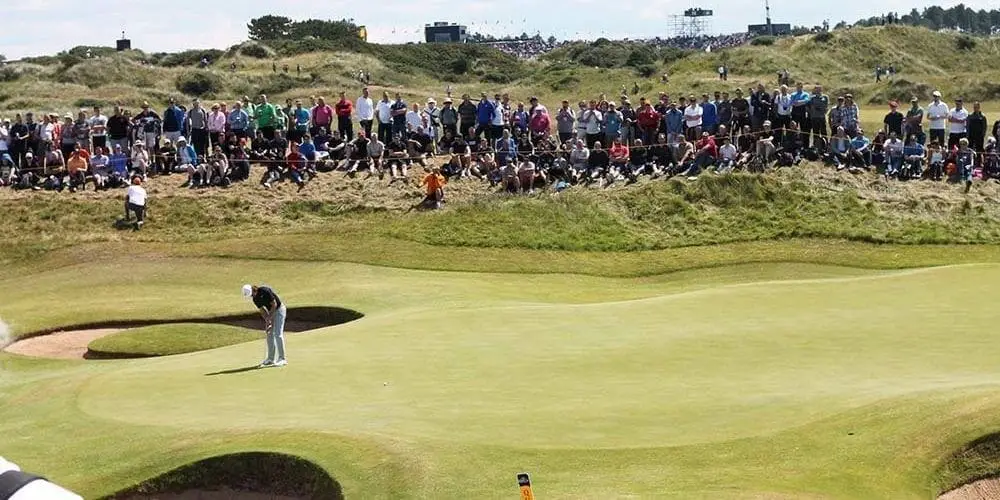
No responses yet